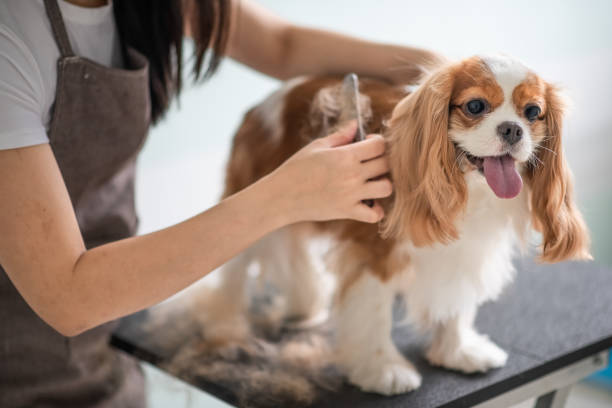Understanding, Treating, and Preventing the Deadly Disease.
Canine parvovirus, commonly known as parvo, is a highly contagious viral disease that poses a severe threat to dogs, particularly unvaccinated dogs and puppies younger than four months. Characterized by its swift progression and high mortality rate, understanding parvo is crucial for all dog owners to prevent this devastating illness and manage it effectively if it occurs.
What is Canine Parvovirus?
Canine parvovirus is a highly infectious disease that primarily affects the gastrointestinal tract of dogs, although it can also damage the heart muscle in young puppies. The virus is known for its durability in the environment, capable of surviving for months under the right conditions, and its resistance to many common cleaners and disinfectants.
Symptoms of Parvovirus:
The initial signs of parvo include lethargy, loss of appetite, fever, vomiting, and severe, often bloody diarrhea. These symptoms can lead to rapid dehydration and significant secondary infections if not treated promptly. Due to its severe impact on the intestinal tract, the disease prevents the absorption of nutrients, which can quickly weaken a dog without immediate intervention.
Transmission of Parvovirus:
Parvo spreads through direct contact with an infected dog or indirectly by the fecal-oral route. It can be brought into a home on shoes, hands, and even car tires, making containment and prevention challenging. The virus thrives in the feces of infected animals, where it can remain infectious in the environment for up to a year under the right conditions.
Diagnosing Parvovirus:
Veterinarians can diagnose parvo based on clinical signs and specific testing. The most common test is the ELISA test, which can detect the virus in a dog’s feces within minutes. Because of the rapid progression of the disease, prompt veterinary attention is crucial as soon as parvo is suspected.
Treatment Options:
Treatment for parvo is primarily supportive care, as there is no cure for the virus itself. The goal is to support the dog’s body systems until its immune system can fight off the virus. Treatment often includes:
- Hospitalization: Many dogs with parvo need to be hospitalized to receive comprehensive care.
- Fluid Therapy: Intravenous fluids are critical to combat dehydration and help maintain blood pressure.
- Nutrition: Nutritional support might be necessary since affected dogs are unable to retain food.
- Medication: Anti-nausea and anti-diarrheal medications help manage symptoms, and antibiotics may be used to prevent or fight secondary bacterial infections.
Preventing Parvovirus:
Prevention is key in managing the spread of parvo, as treatment can be expensive and the outcome uncertain. The mainstay of prevention is vaccination, which is highly effective when administered correctly.
1. Vaccination:
Puppies should receive their first parvo vaccination between 6-8 weeks of age, followed by boosters every three weeks until they are 16 weeks old. Since maternal antibodies can interfere with the effectiveness of the vaccine in very young puppies, a series of vaccinations ensures that immunity is adequately established after these maternal antibodies wane.
Adult dogs should receive booster shots as recommended by their veterinarian. It’s crucial to follow the vaccination schedule closely and ensure that all dogs in a household are adequately vaccinated.
2. Environmental Management:
Because the parvo virus is so durable, cleaning and disinfecting environments where dogs are present is vital. Use a solution of bleach (1 part bleach to 30 parts water) to disinfect surfaces that infected dogs have come into contact with. It’s important to note that the virus can survive on organic material like soil, grass, and fabric, so these areas should be thoroughly cleaned or avoided for several months after an infection.
3. Isolation of Infected Animals:
To prevent the spread of parvo, any dog suspected of having the virus should be isolated from other dogs. This is especially important in multi-dog households, kennels, and places where dogs gather, like parks or doggy daycare centers.
4. Responsible Pet Ownership:
Be cautious about exposing puppies or unvaccinated dogs to environments where many dogs congregate. Avoiding dog parks, pet stores, and other high-traffic areas until puppies are fully vaccinated can significantly reduce the risk of parvo infection.
Canine parvovirus is a severe and potentially fatal disease that can decimate unprotected dog populations swiftly. The keys to preventing parvo are vigilant vaccination, maintaining rigorous environmental cleanliness, and practicing responsible pet ownership. By understanding the symptoms and transmission routes of this deadly virus, dog owners can take proactive steps to protect their pets and ensure that this devastating disease does not recur within their community
.
